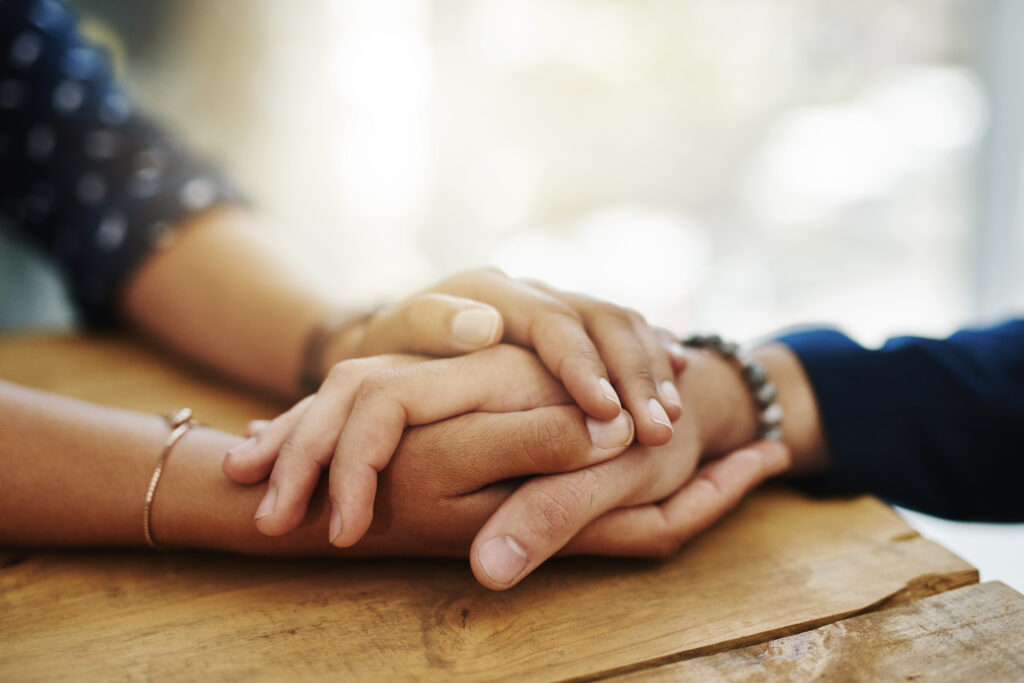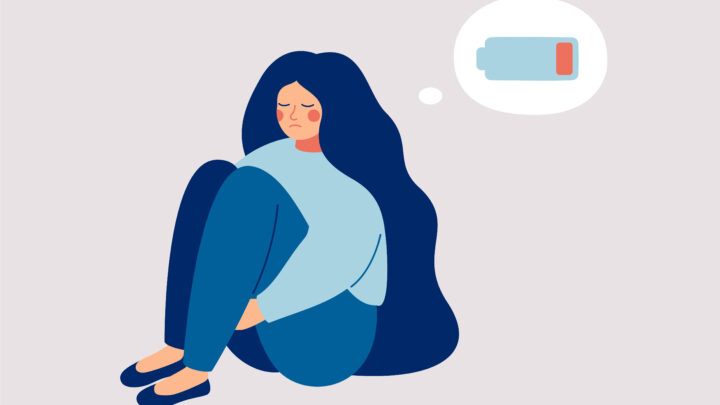I can’t quite pinpoint a specific moment. It crept up on me post-COVID lockdowns and restrictions, like an insidious bug that doesn’t knock you fully flat but slowly, persistently, robs you of your vitals. It was small things at first – a choking panic over an unexpected bill; forgetting to collect my son from training; howling with inflated anguish when a bottle of over-fermented beetroot juice exploded, instantly redecorating the kitchen a ceiling-to-floor homicide red.
But the turning point was probably an otherwise ordinary commute home. “Miss, please, this is the last stop … Miss?!” Stepping into the blustering southerly jolted me out of my sleep fog and stung my cheeks with shame. I was so exhausted I had missed my stop for the second time this week. Surely, this was not normal? But so many women I speak to, regardless of whether they have children or a demanding job or elderly parents (or all or none of the above) are feeling the same. Like the balls are flying a bit too fast to maintain the juggle with relative ease.
Dr Libby Weaver, a nutritional biochemist and author of Rushing Woman’s Syndrome, sums it up succinctly when she says “never before have women been in such a hurry to do so many things and be there for so many people”. She argues that, although the pace of modern life has drastically increased, our bodies still have cavewoman-like biology, which means they are seriously challenged to respond in a healthy way to all the new and constant pressures we face. Could we be steamrolling towards a kind of collective burnout?
The gender burnout gap
“Australian workers reported the highest burnout rates in the world,” says Brooke Taylor, an award winning career coach who says women suffer burnout disproportionally to men. “Just like there’s a wage gap, there is also a burnout gap. According to the 2021 Women in the Workplace report, the burnout gap between men and women has nearly doubled since 2020,” says Brooke. “Working mums are 28 per cent more likely to experience burnout than working dads.”

While the World Health Organization classifies burnout as an “occupational phenomenon”, research from the Black Dog Institute (blackdoginstitute.org.au) and the UNSW School of Psychiatry found that it also impacts people undertaking unpaid home or care duties. Brooke calls this “kin keeping”, saying the work often “goes without credit”. She adds that women tend to carry more of the mental load at home. “Things like remembering everyone’s allergies, arranging gatherings and all of the at-home planning and preparation.”
While stress and burnout are terms we often use interchangeably, it’s important to note that they’re not the same. “Stress is typically situation-specific, such as an important deadline, a sick loved one or moving house,” says Peta Sigley, CEO and co-founder of Springfox, a company that specialises in resilience training. “With stress we can usually identify and name the cause and, in many cases, we know what we need to do or have happen to alleviate it. Our response to stress is emotional but burnout impacts the emotional, physical and cognitive.
“Burnout is the eventual result of chronic stress and takes us further down what we call the downward spiral, so we experience feelings of overload, intensity, mental fatigue and withdrawal,” says Peta. A key symptom that sets burnout apart from stress is wanting to disconnect from the world and those around you.

How to change course
Brooke suggests the first course of action is to work out which three elements of your health reap the biggest rewards for you – this could be anything from sleep, movement and connection, to diet or therapy. Brooke suggests actively aligning these three chosen elements with your main priorities for the next six months, whether that is family, health, work projects, finances or relationships.
“Clearly communicate these priorities with your partner, manager, team and healthcare professionals,” says Brooke. “You need to set clear boundaries and ruthlessly prioritise those things.”
That means setting up a structural framework that supports you in staying on the right path. If you’re not sure where to start, the Black Dog Institute offers a useful self-care planning fact sheet on its website that will help you evaluate which areas of your life require more support or attention.
“It’s about making small shifts in your day that line you up for success,” says Peta. “When we have a strong daily practice we’re less likely to hit burnout and our response to stress is more likely to be functional. That doesn’t mean we won’t ever dip into the downward spiral – we will, but we’ll know how to come back out quickly.”

The daily practice
Peta Sigley suggests looking at all areas of wellbeing – physical, emotional and mental. “Aim to wake up at the same time every day and prioritise moving your body, even if it’s just going for a walk after work,” she says. “Be mindful of eating a balanced, nutritious diet. These are practices that are going to allow you to further your physical wellbeing.”
In terms of emotional wellbeing, practising daily gratitude or spending time with loved ones every day to connect in a meaningful way can help refill your cup.
“For our cognitive wellbeing it’s important to make time for regular mental breaks to prevent stress and overwhelm,” says Peta. “These can be as simple as five-minute slots spread across the day, but the impact on our sense of mental clarity will be significant. It’s also important to practise what we call ‘agility of thought’, which is the ability to identify and shift our thinking from pessimistic to more realist or optimistic.”
Find out why
“Thinking about what brings you joy is not something many people do on a daily basis,” says Peta, “but being clear on your purpose, and reminding yourself of it each day, is a wonderful way to motivate and guide your integral daily practice.”
Call it the Jacinda effect, if you like – the former New Zealand prime minister wasn’t shy in admitting she no longer wanted to carry the impact of her job.
“Most of us won’t become Prime Minister but we are still leaders in our companies, homes and communities,” says Brooke Taylor. “Jacinda Ardern had clarity around her priorities and where her energy and impact could best be leveraged at that point in her life and leadership journey.
“Ask yourself where your energy and presence is most needed and how you can bring more of that to the spaces that matter most to you.”

Check in with others
If you sense that someone in your life is emotionally exhausted, reach out to them. “Invite them for a coffee or a walk and acknowledge that they haven’t seemed themselves lately,” says Peta. “Ask questions that allow them to respond authentically. For example, rather than ‘is work going well?’, try asking ‘how have things been at work recently?’. This allows them to open up if they choose to.”
Not everyone will, of course, but if they do tell you how they feel, resist the temptation to offer a ready-made, fix-it solution.
“That can add to feelings of overwhelm so consider what you can do to help them, something you can take off their list,” says Peta. “It might be rescheduling an appointment for them or setting up a meal delivery service to take care of dinner for the week.”
The takeaway
New research by UNSW and the Black Dog Institute shows that perfectionists and work-oriented people are predisposed to burnout, but it can happen to anyone under pressure and is over-represented in dutiful, reliable, caring people.
Some symptoms of burnout can be hard to distinguish from depression or anxiety, so “if you’re experiencing symptoms of prolonged stress it’s important to speak to a healthcare professional who can help identify what might be going on and advise on appropriate next steps,” says Peta.
Even if you’re not at burnout, a thorough self-check on how life’s competing demands fit into your bigger picture priorities is a healthy habit in and of itself.
Standing in the bitter cold that night, a long trek from my day job and late for the next, came a realisation that my ability to push through anything is no longer a badge of honour I actually want to wear.
While I once would have considered that a sign of weakness, I’ve shrugged off any sense of shame about wanting to juggle fewer balls. Knowing your priorities (and sticking to them) is actually a strength that takes time to develop the muscle for. One that, incidentally, I exercised when scrubbing the kitchen disaster down to a less violent Barbie pink – the pesky repaint job, I have decided, can wait until I’m ready


